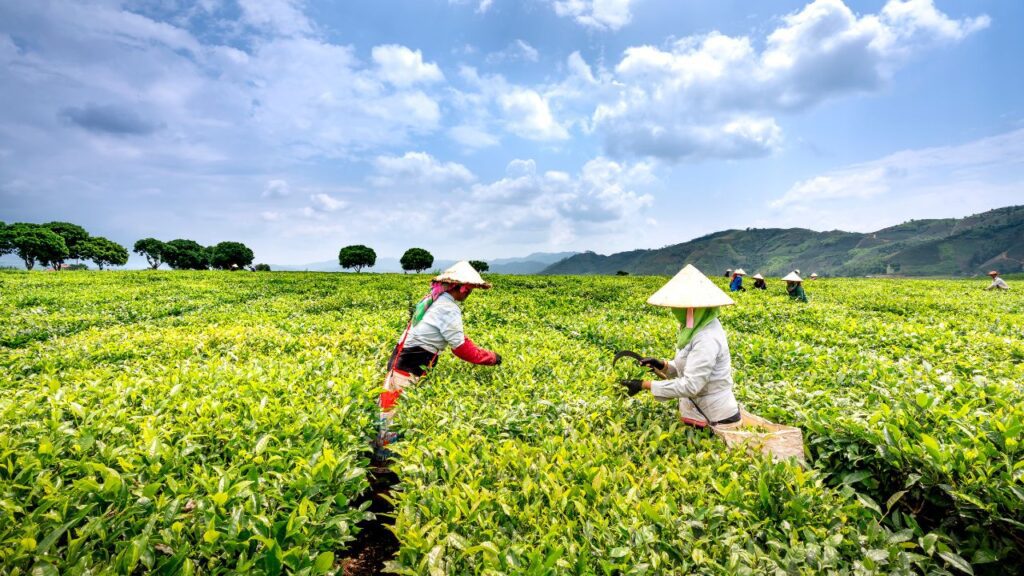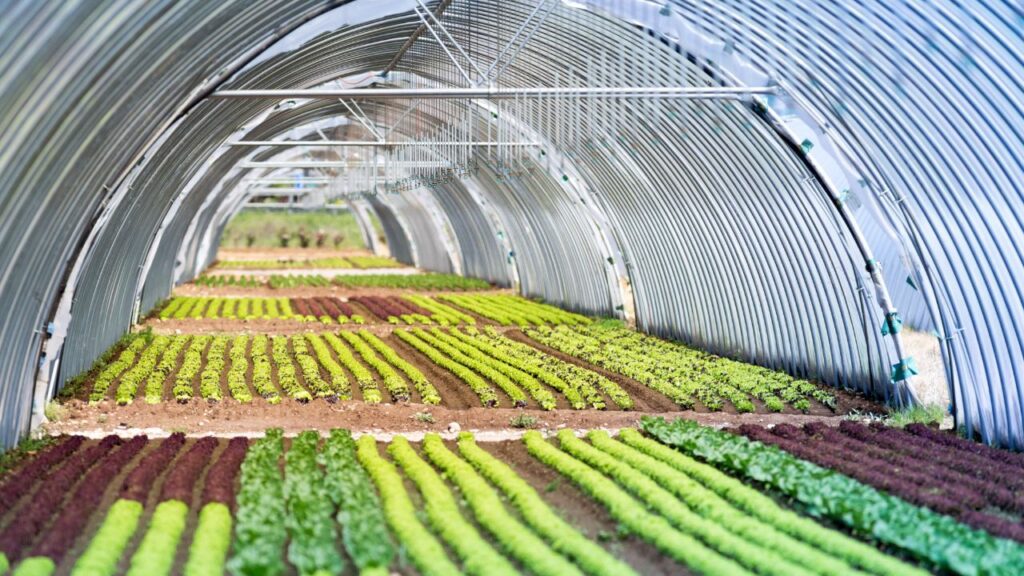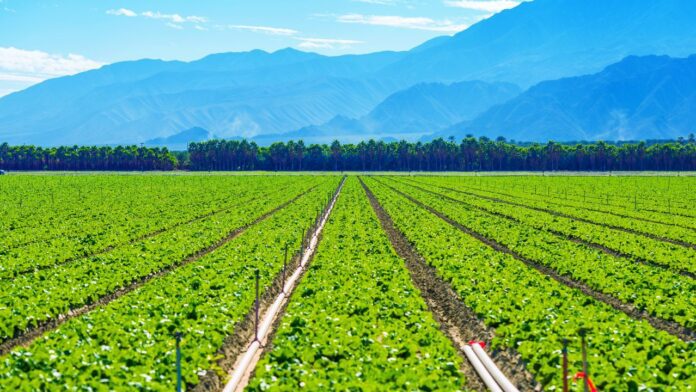Agriculture is not just about growing crops—it’s the cornerstone of civilization. From feeding billions to fueling economies, the sector plays a pivotal role in shaping societies, providing employment, and maintaining food security. Across continents, certain nations have distinguished themselves as leaders in agricultural production, thanks to fertile land, favorable climates, innovative technology, and strong policy support.
But which countries produce the most food? How do they manage land use, and how does agriculture impact their economies? Here’s a comprehensive look at the top 10 agricultural producing countries around the world, backed by the latest statistics and credible sources.
1. China: The Undisputed Agricultural Superpower
China not only leads the world in terms of the volume of food produced, but it also plays a crucial role in feeding over 1.4 billion people domestically. The country’s farming systems range from traditional rice paddies to cutting-edge smart farms using drones and AI. With initiatives like the “No. 1 Central Document,” the Chinese government continues to invest heavily in agricultural modernization, land reform, and farmer welfare. Additionally, the country’s leadership in aquaculture makes it a top contributor to global seafood production.
- Key crops: Rice, wheat, corn, soybeans, cotton, potatoes, and tea
- Livestock: One of the world’s largest producers of pork and poultry
- Economic contribution: Agriculture contributes approximately 8% to China’s GDP, employing over 300 million people
- Land use: Around 54% of China’s land is used for agriculture
- Tech innovation: China has aggressively adopted precision agriculture, smart irrigation, and floating-bed farming, particularly in provinces like Zhejiang
The country leads the world in rice and vegetable production, and its rural revitalization strategies emphasize sustainable farming, eco-agriculture, and increased mechanization. According to Statista and World Bank data, the government also invests heavily in biotechnology and agricultural AI to overcome land degradation and climate-related challenges.
2. United States: Global Leader in Agricultural Innovation and Export
The United States operates one of the most efficient and technologically advanced agricultural sectors globally. From the vast cornfields of Iowa to the almond orchards of California, American farmers utilize GPS-guided machinery, biotech seeds, and AI-powered logistics. The country is also a major player in the global food aid system, exporting billions of dollars in food assistance annually. Beyond crop production, U.S. agri-businesses dominate global agritech, seed, and machinery industries.
- Major crops: Corn (No. 1 worldwide), soybeans, wheat, cotton, fruits, nuts, and vegetables
- Livestock: Beef, dairy, poultry, pork
- Economic value: The agriculture, food, and related industries contributed $1.537 trillion to U.S. GDP in 2023, or about 5.5%, according to the Bureau of Economic Analysis (BEA)
- Workforce: Roughly 10.4% of U.S. employment is linked to agriculture and food sectors
- Technology: The U.S. is a pioneer in precision agriculture, biotech crops, GPS-guided tractors, and drought-resistant seed varieties
The U.S. exports a significant portion of its agricultural production, especially soybeans, corn, and wheat. It also supports subsidies and research programs to bolster resilience against droughts, pests, and global market shifts.
3. Brazil: South America’s Agricultural Powerhouse

Brazil’s agricultural economy is vast and varied, spanning the Amazon basin to the Cerrado savannahs. In addition to staple crops, Brazil is the largest global exporter of beef, coffee, and orange juice. Agribusiness represents nearly a quarter of Brazil’s GDP, and the sector has attracted billions in foreign investment. However, Brazil continues to face international pressure to reconcile its booming agribusiness sector with biodiversity conservation and indigenous land rights.
- Top products: Soybeans, beef, poultry, coffee, sugarcane, corn, citrus fruits, tobacco
- Global standing: Second-largest soybean producer and among the top exporters of beef and coffee
- Agricultural land use: Approximately 41% of Brazil’s total land area is used for farming
- Workforce: Around 9% of the labor force works in agriculture
- Challenges: Brazil faces international criticism for deforestation in the Amazon, often driven by farming and cattle grazing
Despite these concerns, Brazil is adopting remote sensing technology, satellite monitoring, and no-till farming to promote sustainable agriculture. The country’s Embrapa (Brazilian Agricultural Research Corporation) plays a key role in driving agri-innovation.
4. India: A Diverse and Traditional Farming Nation
India’s agriculture is as culturally diverse as its people, with regional specialties like Basmati rice in the north and spices in the south. Despite its challenges—including water shortages, fragmented land holdings, and climate vulnerability—India remains self-reliant in food production. The government has launched several flagship initiatives such as the Pradhan Mantri Fasal Bima Yojana (PMFBY) crop insurance scheme and eNAM (National Agriculture Market) platform to support farmers.
- Main crops: Rice, wheat, maize, cotton, sugarcane, pulses, and oilseeds
- Horticulture: India is the largest producer of fruits like mangoes, bananas, guavas, lemons, and papayas
- Spices: Globally dominant in the production and export of turmeric, cardamom, chili, and ginger
- Labor force: Over 45.5% of the Indian workforce is engaged in agriculture
- GDP share: Agriculture contributes about 18% of India’s GDP (per MSPI)
- Government support: India maintains extensive minimum support prices (MSPs), subsidies, and rural credit programs
India faces challenges such as monsoon dependency, fragmented landholding, and low mechanization in rural areas. However, initiatives like PM-KISAN and digital agri-platforms aim to empower farmers with data, capital, and market access.
5. Russia: Grain-Rich Giant with Vast Arable Land
Russia’s geographic spread across 11 time zones allows for diverse agricultural zones ranging from grain belts to dairy regions. It is particularly strong in winter wheat production, often used to stabilize global grain markets. In recent years, Russia has pivoted toward increasing food sovereignty, especially in response to international sanctions. Government incentives now support domestic seed production, fertilizer development, and high-tech farming to reduce reliance on imports.
- Key crops: Wheat, barley, oats, rye, maize, sugar beet
- Land use: Over 23 million hectares (57 million acres) are under cultivation
- GDP share: Agriculture accounts for roughly 6%
- Labor force: About 16% of Russians are employed in agriculture
- Export power: One of the top five wheat exporters globally
Russia’s agricultural sector is increasingly automated and focused on boosting yields despite cold climates and limited growing seasons. Fertile regions like the Black Earth Belt are vital to national production.
6. France: Europe’s Breadbasket

France combines centuries of farming tradition with strict food safety regulations and environmental stewardship. It is home to the world’s most prestigious wine-producing regions and renowned for its dairy and cheese industries. As a leading voice in the European Union’s Common Agricultural Policy (CAP), France promotes agroecology, animal welfare, and sustainable land use practices. The country also supports smallholder farms and artisanal producers through strong regional food identity protections.
- Top products: Wheat, barley, maize, sugar beets, wine grapes, dairy, and oilseeds
- Livestock: Beef cattle, poultry, and pigs
- Economic stats: Agriculture represents about 2% of France’s GDP, but the nation exports billions in wine, cheese, and grains
- Farms: Around 700,000 farms operate across France
- Sustainability: France promotes organic farming, biodiversity, and low-carbon agriculture under its Agroecology Plan
In 2024, France became the largest EU exporter of alcoholic beverages, especially wine and spirits, according to Eurostat. The government offers extensive subsidies and training to enhance environmental resilience.
7. Mexico: Traditional Crops and Global Exports
Mexico’s agriculture thrives on a blend of ancient knowledge and export-driven agribusiness. Indigenous farming techniques like milpa (intercropping corn, beans, and squash) coexist with large-scale avocado and berry farms. The country is also a major supplier of fresh vegetables to the U.S. and Canada under NAFTA/USMCA agreements. Government programs like “Sembrando Vida” aim to revive rural agriculture, fight poverty, and address migration by promoting tree planting and agroforestry.
- Top crops: Corn, avocados, sugarcane, wheat, blue agave (used for tequila), chili peppers, bananas
- Land use: About 15% of land is dedicated to farming and 50% for grazing
- GDP share: Agriculture contributes around 3.8%
- Employment: About 13% of the workforce is employed in the agriculture sector
- Strengths: Leading global exporter of avocados and tequila
The Mexican government promotes sustainable practices through training programs and rural development efforts aimed at empowering smallholder farmers, who form the backbone of the rural economy.
8. Japan: Tech-Savvy Agriculture in Limited Space
Japan’s mountainous terrain and limited arable land have spurred innovation in agricultural intensification. Urban farming, vertical greenhouses, and plant factories help Japan maintain food security despite its land constraints. The government offers strong subsidies and disaster insurance to safeguard farmers from earthquakes, typhoons, and trade disruptions. Japan also exports premium agri-products like Wagyu beef and high-grade sushi rice, which are in high demand across global luxury markets.
- Top crops: Rice, tea, soybeans, vegetables, fruits
- Livestock: Premium Wagyu beef, poultry, and dairy
- Technological innovation: Automated harvesting, smart greenhouses, hydroponics, and robotic rice planting
- GDP share: Around 1.2%, but heavily supported by government subsidies
- Cultural value: Rice farming is central to Japanese identity and national food security
Japan also maintains one of the largest fishing industries, with strict regulations to ensure food safety and sustainable resource management.
9. Germany: Eco-Conscious Agricultural Hub
Germany emphasizes ecological balance, organic farming, and precision in its agricultural practices. The country is a leader in agri-environmental policy, supporting initiatives like biodiversity conservation, climate-smart cropping, and renewable energy generation on farms. Germany’s food sector is also known for its traceability and strict quality standards, making it a preferred exporter within and outside the EU. The government’s digital farming strategy aims to connect farmers with data-driven solutions.
- Primary crops: Wheat, barley, potatoes, sugar beets, rapeseed
- Livestock: Pork, cattle, poultry
- GDP contribution: Agriculture accounts for less than 1% of GDP
- Organic farming: Roughly 10% of farmers use sustainable and organic methods
- Policy focus: Germany supports climate-smart agriculture, crop rotation, and green energy on farms like biogas and solar installations
The government provides strong backing for EU CAP programs and invests in digitization to modernize agricultural operations, especially in eastern Germany.
10. Turkey: Fertile and Self-Sufficient
Turkey enjoys a rich agricultural legacy dating back to ancient Anatolian civilizations. Its mild climate and geographic diversity allow year-round cultivation of a wide range of crops. Agriculture plays a vital role in rural development and poverty reduction, especially in Eastern Anatolia and Southeastern provinces. The Turkish government also supports its farming sector through input subsidies, mechanization programs, and trade incentives—helping maintain a high level of food self-sufficiency.
- Top products: Hazelnuts, apricots, figs, raisins, cherries, grapes, wheat, and vegetables
- Employment: Agriculture employs around 19.2% of the workforce
- Economic importance: Agriculture remains a vital sector for exports and rural income
- Climatic edge: Mediterranean and temperate zones allow year-round cultivation
- Export strengths: Leading exporter of dried fruits and nuts
Turkey’s agricultural policies prioritize food security, irrigation infrastructure, and farmer credit programs. Regions like Anatolia and the Aegean are central to its diverse output.
Takeaways
These top 10 countries are at the heart of the global food system. Their output, innovation, and policies shape what the world eats, how it is produced, and how agricultural challenges—from climate change to food insecurity—are tackled.
Each country brings something unique to the table:
- China leads in volume and labor force.
- The U.S. dominates with innovation and exports.
- Brazil and India feed billions through scale and diversity.
- Europe focuses on quality, sustainability, and tradition.
- Japan and Mexico offer examples of adaptation and resilience.
- Turkey and Russia use land and climate to maximum potential.
As the world looks to the future of sustainable and tech-powered farming, these nations will continue to lead the way.


















![10 Countries With the Best Healthcare in the World [Statistical Analysis] Countries With the Best Healthcare in the World](https://articleify.com/wp-content/uploads/2025/07/Countries-With-the-Best-Healthcare-in-the-World-1-150x150.jpg)










